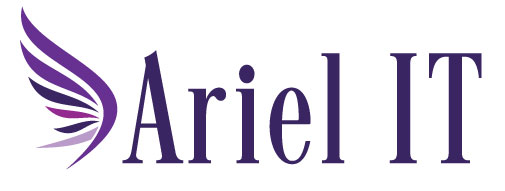 Are your business’s computers running sluggish? Can they run the latest versions of software your company needs to be productive? Are they running supported, patched versions of operating systems and software? Are you still running Windows 7? If you’re not sure, now is the time to audit your computers, determine your business needs, and plan for a hardware refresh.
Are your business’s computers running sluggish? Can they run the latest versions of software your company needs to be productive? Are they running supported, patched versions of operating systems and software? Are you still running Windows 7? If you’re not sure, now is the time to audit your computers, determine your business needs, and plan for a hardware refresh.
What is a Hardware Refresh?
A hardware refresh happens when you plan to retire older computers and replace them with newer models that are up to date and can be managed efficiently and cost-effectively. Some small businesses replace all of their systems at one time, while some larger organizations plan rolling hardware refreshes where they might replace one-third of their computers each year.
The hardware life cycle, or how long you can reasonably expect to keep a computer before upgrading it, will depend on what it is being used for and the starting quality of the machine.
Designers and programmers usually invest in higher-end systems and use them for 2-3 years before replacing them. Office workers using word processing apps and applications that run in the cloud can extend their computer’s life up to five years.
Do I have the Right Computers Now?
If your employees are spending too much time waiting for computers to start up or for applications to run, it is time to plan for a hardware refresh. Audit your existing computers by recording their age, operating system, CPU speed, RAM and available disk space.
-
- Older Computers are a Security Risk Older computers are more likely to have old software and versions of Windows installed, and these old versions may not be receiving security patches. Are installed versions of Windows reaching their end of life soon? Can your computers meet the minimum requirements to install new versions?
- Older Computers are Costly to Maintain Like older cars, older computers and older versions of software can take more effort and cost more to maintain. They run out of disk space, laptop batteries stop holding a charge, and they are more prone to failures. Computers with older versions of software may not be able to install security updates, which means additional IT costs to mitigate viruses and cyber attacks.
- Older Computers Reduce Productivity. Employees spend more time waiting on the computer to respond, and less time being productive. Computers older than four years fail more often, and all of those IT visits add up to 42 hours of lost employee productivity.
What Computer Does My Small Business Need?
Before purchasing new computers, determine what your business needs are. This includes determining how many employees need a computer, what their roles are, and what software they will need to do their jobs effectively. By matching the computer to the needs of each role, you can avoid overspending for roles that do not require higher-end computers while providing IT intensive roles with the equipment they need.
Windows 7 End of Life Will Require Hardware Upgrades
Windows 7 will reach its end of life in less than two years. This means Microsoft will no longer release operating system updates, drivers, or security patches for this version of Windows, increasing your security risks for any computers running Windows 7 after January 14, 2020.
Your existing computers may not be able to upgrade to a supported version of Windows. Each Operating System has specific hardware requirements to run efficiently: the amount of memory available, the amount of disk space, and the speed of the CPU. Computers that don’t meet these requirements cannot install the operating system at all, and computers that just barely meet the minimums will run sluggishly – affecting your employee’s productivity.
The minimum requirements for Windows 10 are set quite low, but it only guarantees the OS will run, not that your experience will be pleasant!
 Make a Hardware Refresh Plan
Make a Hardware Refresh Plan- Keep Your Hardware Audit Up to Date. Know what you have and if it is reaching the end of its useful life to minimize unexpected expenses.
- Check Software Requirements. The software your business needs may have higher requirements than the operating system. Ensure you’re buying computers that can support the software your employees will use to perform their jobs.
- Plan for Five Years. Buy a computer at a level that will last five years. Planning for an extended life is less expensive than capital expenses every 2-3 years.
- Invest in Solid State Drives. These drives have a minimal upfront cost of $100-$300 higher than other drives, but your employees’ computers boot up in less than 30 seconds and applications both startup and run much faster. Over the course of three years, your employees are happier and more productive from the moment they start their computer to the end of their day – every day.
Technology as a Service (TaaS)
An alternative to buying and replacing hardware on your own is subscribing to “Technology as a Service” which is a bundle that includes the computer hardware, software, and service. The provider is responsible for buying, vetting, maintaining and replacing the hardware as it ages, while your company pays a single monthly fee. Subscribing to this service allows your company to adapt faster to changes in personnel – add more computers with new hires or scale down in times of austerity.
We demand more from our computers today than we did 3-5 years ago with larger files and an ever-increasing number of applications. Upgrading your system now provides access to better tools and increased productivity. arielMIS can help you assess your current computers, plan for your future needs, and perform the hardware refresh when it’s time.
arielMIS is a Managed Service Provider (MSP) providing businessCARE™ IT services designed to keep you and your employees productive and safe. Contact Us if you're interested in learning more about our services.
